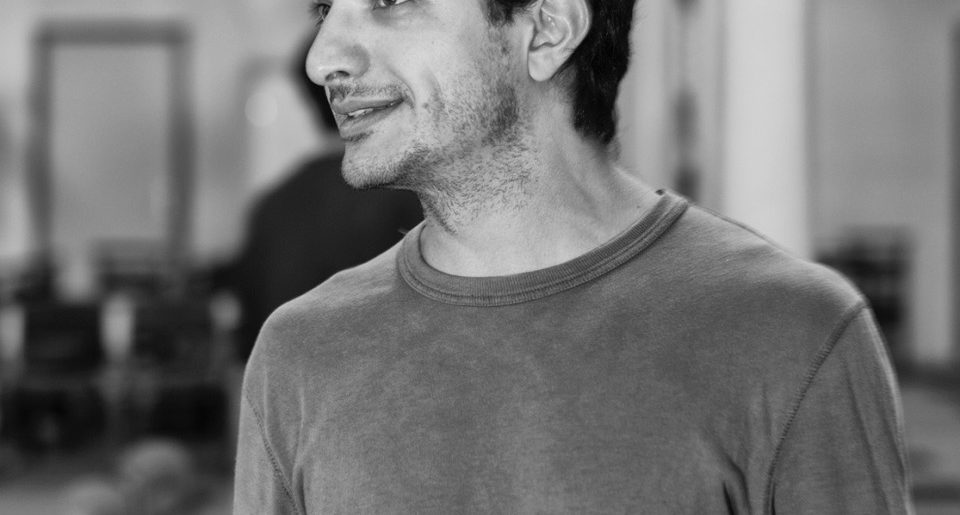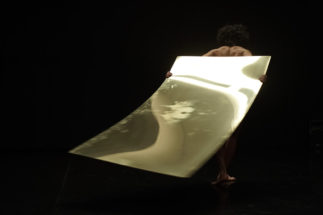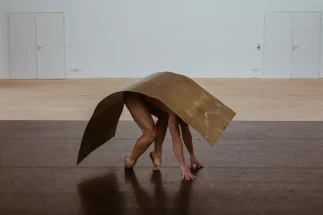Biography
Ehsan Hemat, born in Shiraz-Iran, is a Brussels choreographer, performer and theater maker. “Dance on glasses/Amir Reza Koohestani” marks the beginning of his dance career in 2000.
He has worked with a number of different artists from different disciplines such as: William Forsythe, Anke Blonde, Felix van Groeningen, David Zambrano, Goele van Dijk, Mokhallad Rasem, Eric Kaiel…
He taught at: Fontys Academy (Tilburg), LCDS/The place (London), CCDC (Cairo), ICCD (Tehran), Dance Academy of Bahia Blanca (Argentina), Wisper (Belgium).
Ehsan’s debut piece “I put a spell on you” (2018) is an ambitious exploration of the effects of discipline and control on the human body. It was awarded the Best Choreography of the Tehran International Fadjr Theater Festival in 2019 and received the Grand Prix “Mila Trailović” Prize of the Belgrade International Theater Festival in 2021.
“The Hole” (dance short film 2021) is a collective creation that Ehsan was part of and was awarded for the best experimental short film of the Short Encounters International Film Festival. He joined Moussem as a resident maker in 2021 and is developing two projects in a co-lab residency. A self-choreographed solo and a group piece, in which he collaborates with four Iranian theater artists, including his uncle.
In residentie A in the role of B, when C didn’t make it
30.01.2023 – 10.02.2023
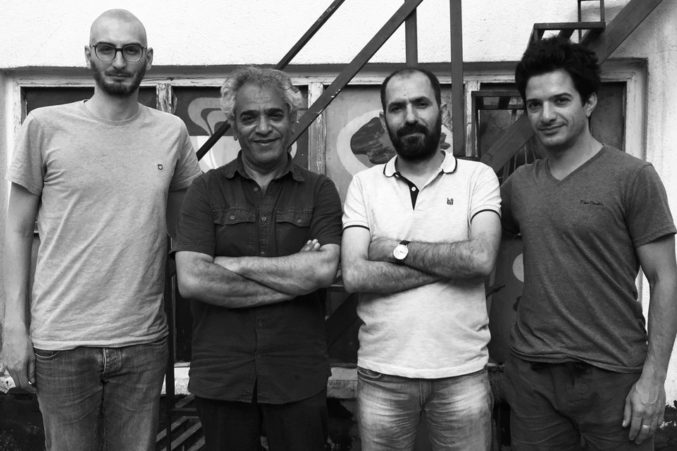
It all started from a family relationship. A contemporary dancer receives the very first prize for choreography in Iran. He receives the prize from his uncle, a well-known classical theater actor. They were both on stage, one giving the award and the other receiving it. That was the closest they came to realizing a longtime cousin dream: sharing the stage with his uncle, a seemingly… impossible task given their vastly different styles. This work started as the realization of that dream. Ehsan Hemat, a contemporary dancer born in Shiraz and based in Brussels, proposed a project that would make him and Asghar Hemat, his uncle, a classic actor and a follower of the Stanislavsky method, on the same stage.
During the initial research and development phase, Asghar Dashti, an experimental theater director, and Keyvan Sarreshteh, a young playwright, joined the project. Two became four and family relationships zoomed out to professional ones; a dream project based entirely on feelings evolved into something that is both mathematical and emotional. Now “A in the role of B, when C didn’t make it” is a project about relationships; a bird’s-eye view of how our relationships influence our trajectory in life and what a vast and hidden network of people is involved.
It starts with the here and now of the performance, with a question-and-answer session about that mythical feat (which actually happened) and then moves back both chronologically and, more importantly, spatially. The performance focuses on how far or close people and events were, both physically and emotionally, how they have changed over time, how it all led to here and now. The structure of the piece is like a journey through a mind map that starts with the performance and ends with Asghar Hemat as a boy watching Siah (Blak face), a traditional Iranian performer for the first time. The journey goes all the way back to this key moment…
During this trip, some “coincidental relationships” will be discovered (such as how Keyvan’s father was born in Shiraz, during a trip, the birthplace of both Ehsan and his uncle, and how neither of them live there anymore); some “mirror relationships” will be explored (how Asghar Dashti and Asghar Hemat had similar influential figures in their youth); some “strained relationships” are mentioned (such as how Asghar Dashtien Asghar Hemat clashed during theater union meetings and how this relationship changed because of Ehsan’s presence); and some “erased relationships” will be brought back to light (that have been forgotten or removed from memories and histories).
The performance starts with all four characters – the dancer, the actor, the writer and the director, but if we go back in time, first the writer leaves the web, then the director goes out and the dancer and the actor remain alone with their family ties as a link, while the writer and the director become actors or technicians who facilitate the presentation of the play and add additional layers of data from outside the map (as if outside of time); For example, Keyvan, the writer, could become the lighting operator, shining light on corners of the map or current bodies to different parts of the network. Going back even further, Ehsan (no longer born) also leaves and only Asghar Hemat the actor is left to show us how it all started.
During this journey and at certain “key points” of the map, we step out of the web for a moment to present some important slices (such as when Eshan, as a child, saw his uncle “die” on stage or when Mr. Hemat saw Ehsan’s first 8 me dancing on stage) and then returned to the map and our journey. The next phase of the project will take place in the rehearsal room, identifying those key moments according to the map we have drawn and adapting the concept to the reality of the stage.
In residentie EVERYTHING BRINGS US BACK TO THE BODY
16.12.2024 – 20.12.2024
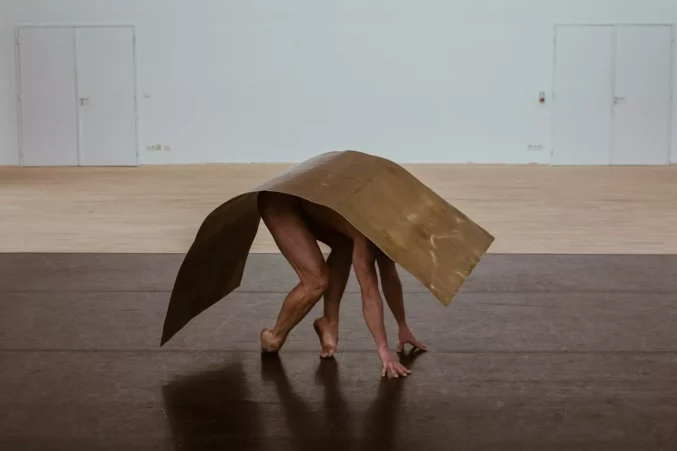
Bodies are so much our own and yet they feel strange. Much has to do with a flood of filtered and manipulated images, inside and outside of social media. The new perfection is quietly ridiculous and unachievable. Brussels-based choreographer Ehsan Hemat tackles this in his new performance Everything brings us back to the body. A quest for more balance, a call to become less dependent on technology.
Inspired by the poetry of Rumi, he explores the possibilities of the human body interacting with an eighteen-kilogram copper plate. The result is a ritual of both visual and auditory reflections. Equating subject (human) and object (plate) invites a dialogue between the earth and our human essence.

